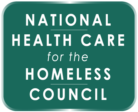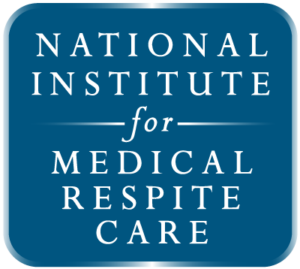Menu: HCH | A Vision of Health for All – Pages
Health Care for the Homeless: A Vision of Health for All
Part Two: Evolution of the Model of Care
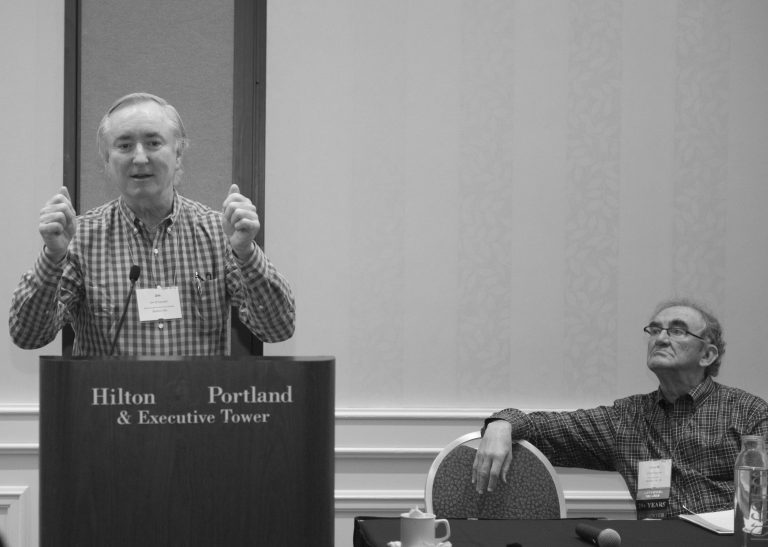

HCH was first characterized as outreach-oriented primary care delivered by physician-nurse-social worker teams. The key questions posed to the presenters and participants of the HCH Pioneers Session in this section were: How has the HCH model of care changed in the past 30 years? What factors have contributed to the changes over time (e.g., McKinney Act; Health Center Consolidation Act; Affordable Care Act; managed care; new treatment options)? How does the HCH model fit with the current health care environment?
In this section of the HCH Pioneers session, Dr. Jim O’Connell, from the Boston HCH Program, responded to Brammer’s comment about how she is sorry that after 30 years of this work she still has a job. He stated:
O’Connell described the fall of 1984 in Boston, when,
He added that this was after deinstitutionalization, which his colleague Bob Taube always reminds us was a good idea, but the necessary community-based services weren’t provided. O’Connell added that at the time in Boston the shelters were amassing a legal suit against the Department of Mental Health because of their lack of adequate community-based mental health services.
In Boston, they looked at St Vincent’s Hospital as a model program. O’Connell states, “It was the only model at the time. It was a remarkable model of nurses working with doctors. By the way, it was appropriate that the first panel (for the Pioneers session) was all nurses.
It was very much based in the hospital but going out and doing services in the community. Homeless folk told us they wanted it to be hospital-based so if they got sick, we’d take care of them.” Their model evolved, providing services in soup kitchens, in detox units, and out on the street. “Then the challenge was how to provide continuity of care.”
O’Connell spoke of how wide and variable the conditions were in terms of responding to local-area needs surrounding health and homelessness. “We were dealing with pressures from the mayors and coalitions while working within some guidelines of the Foundation. The richness of the thing was how wide and varied it was, and I think the challenge was how wide and varied it was and how do you come up with good models of care.”
It is interesting to note that the only numerical goal that the HCH demonstration projects were asked to meet was to provide services to at least 1,500 people without homes each year. The funders did not stipulate whether or not this was to be an unduplicated count.
The original HCH program goals have been characterized as vague, and included continuity of care, coordination of services, and effective case management, without specific operationalized definitions of what these were or of how to measure progress towards these goals.[1] However, early in the administration of the federal HCH program by the Health Resources and Services Administration, HCH-funded programs were required to delineate and document specific primary care problems to address, along with goals, measurable objectives, and method/action steps.[2]
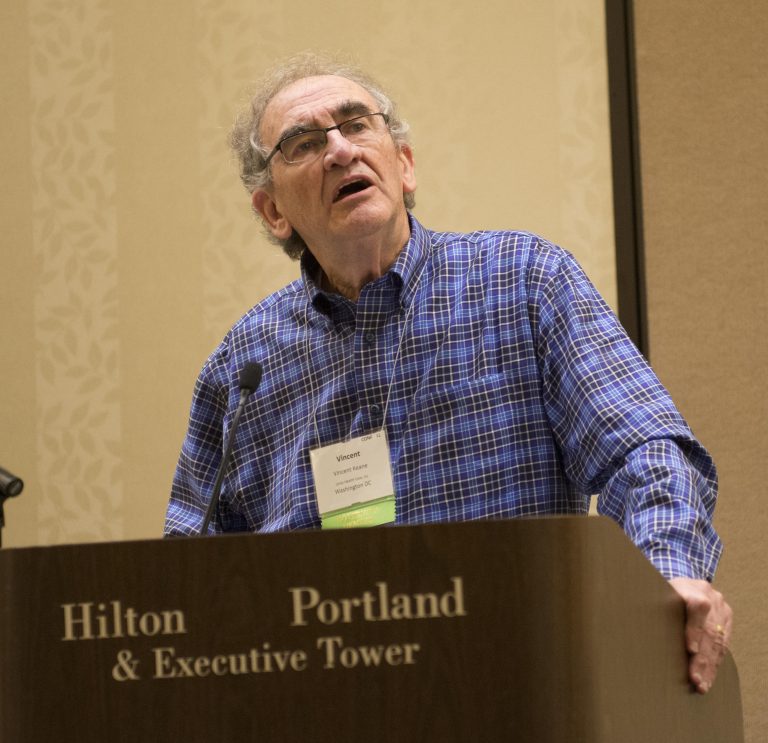

Vince Keane spoke next in this section of the Pioneers session. He said the real pioneer from Washington, D.C., who was in the room was Dr. Janelle Goetcheus. He pointed out that he came into work with HCH when it was already established, in 1990 in Washington, D.C. Dr. Goetcheus and her team believed that “you go where the people were.” He spoke of CCNV (Community for Creative Nonviolence), which was and still is one of the largest shelters in the country. Mitch Snyder ran it “to the extent that anyone ran it. Mitch was the biggest opponent of us coming to the shelter. He believed it was institutionalization of health care delivery.
He thought anyone who made money from health care was impure—he saw it as exploitation.” Snyder also insisted that volunteer doctors and universities “love to work with homeless people because they could experiment on them. It took time to earn their [CCNV’s] trust and approval. 30 years later the shelter [with an HCH clinic] is still there. There are 1,000 people currently living in the shelter. Success was developing that collaboration.”
Before Keane worked at HCH he worked at the NACHC (National Association of Community Health Centers) with Freda Mitchem who ran the homeless portfolio before the Council took it over.[3] “She believed in the concept, but it didn’t quite fit at that time under the NACHC umbrella. It wasn’t a right fit at that time with FQHCs.” Keane states that the technical assistance grant went to the National HCH Council instead. He was asked to be the CEO of HCH and “then John took over the contract.”
The Washington, D.C., HCH Project eventually took over for a faltering Community Health Center and became a CHC, Unity Health Care. Keane reports that the agency encountered challenges in “assuring our existing homeless staff we hadn’t lost our mission. We expanded over the years and became a full-fledged CHC.” Keane sees advantages to being a FQHC, especially in terms of being able to provide dental and mental health services. They’ve also expanded their services into the prison system. He spoke of the importance of a team-based approach and creativity within the 19 (original HCH) sites, which were based on the same principles, but were operationally different. The main guiding principles were “1) commitment, and 2) continuity of care. Plus, an integration of mental health/substance abuse/oral health.”
In conclusion, he had this to say:
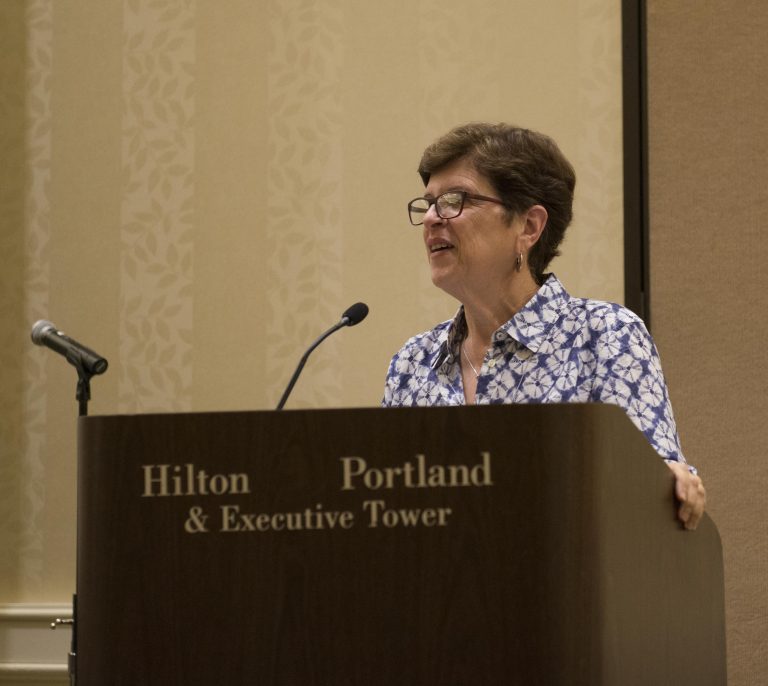

Jean Hochron served as the HRSA point person for the HCH program in its formative years and beyond. She spoke of three phases of the HCH lifecycle from the federal perspective:
- The early years, 1987-1995
- Separate legislative authority— under Section 340 of the Public Health Service Act.
- Relatively small cohort of grantees with very limited growth: 119 grantees, including the original 19.
- Funding uncertainties from year to year. “How can we provide continuity of care if we can’t count on funding?”
- Little recognition as participants in the Community Health Center Movement.
- Early development of HCH professional standards.
- Consolidation and growth, 1996-2002
- Passage of the Health Center Consolidation Act of 1996. Congressional authority changed from Section 340 of the Public Health Services Act to Section 330(h), with ‘h’ as in homeless.
- HCH becomes part of a larger set of programs addressing access to care.
- Consolidated program expectations. She sat on a panel to decide this and would say, “Excuse me, that won’t work for the homeless programs.” Waiver for 51% consumer involvement[4]—“they hated us because we had the easy way out, because we didn’t have to have 51% consumers on our board.”
- Emergence of the Council as a source of training, technical assistance, and community-building—“which didn’t come under the previous contractors like NACHC and Freda and John Snow—they did a wonderful job of education but not community-building. It was the Council that brought us together as a family.”
- The Council published Organizing Health Care Services for Homeless People (1997, 2001) by Marsha McMurray-Avila, “the book—the HCH bible.”
- The HCH Clinicians’ Network was started during that time.
- The first national meeting of Medical Respite providers, in Chicago in 2000; the Medical Respite Providers Network later merged into NHCHC.
- The National Consumer Advisory Board was organized soon afterwards.
- Expanded numbers of grantees and people served.
- The past 10 years or so
- In 2004-2005, much more significant consolidation with the FQHC world occurred.
- Finding our place in measurement and standards, including quality metrics.
- Developing partnerships “or at least misery loves company with other special interest groups and National Cooperative Agreement[5]”
What’s changed?
- HCH has always lived in two worlds, the two families of health and housing. “We’re now moving much more towards our health care family … population health, migrant health, etc. Now we see HRSA and HUD and VA and SAMHSA all holding hands.” Hochron is somewhat skeptical, but she thinks they’re making progress.
- HCH used to get pressure for “getting off easy” in regards to program expectations, but that is no longer the case.
- Early HCH programs used to struggle to get funding for outreach, enabling services, behavioral health, and oral health. “We’ve moved a tremendous way in that area.”
What’s not changed:
- The challenge of training/enlightening federal officials and their representatives, program officers, OSV (Operational Site Visits, HRSA’s current oversight for grantees) team members, policy staff, and grant reviewers.
- Funding and programmatic silos and stovepipes, which tend to support discrete activities rather than addressing the whole person and the whole system. “We still have to chase funding in many different directions.”
- We’re still seeing the same systemic challenges that created HCH—we cannot end it and are unable to prevent it [homelessness].
Hochron concluded:
There’s little recognition of HCH within community health. We don’t always look like our brothers and sisters in the community health world. But let’s not forget a few other things that have not changed and that are quite remarkable:
- The commitment of thousands of people to this work continues.
- The community created by the Council has just gotten better and better.
- Our impact hasn’t changed. There are many people whom we have touched and healed and helped into recovery and into housing.
- The leaders and advocates we’ve created among administrators, clinicians, consumers, and at least one fed.
~ Jean Hochron
In a recent American Journal of Public Health review article, the authors summarize the development of the HCH model of care and emphasize key elements of the HCH model: 1) outreach and engagement, including the development of patient tracking methods[6]; 2) community collaborations to provide HCH patients with a variety of social and health benefits and services; 3) case-management; 4) medical respite care; and 5) consumer involvement and patient-driven care.[7]
[1] James D. Wright, “Methodological Issues in Evaluating the National Health Care for the Homeless Program,” New Directions for Program Evaluation 1991, no. 52 (December 1, 1991): 61–73, doi:10.1002/ev.1594.
[2] Copy of Primary Health Care Section of HCH Grant Proposal from The Daily Planet, Richmond, VA, 1989. Document in personal files of Josephine Ensign.
[3] HRSA has contracted with a succession of nongovernmental organizations to provide technical assistance, conferences, education, training and resources for its HCH grantees, including NACHC, John Snow, Inc., Policy Research Associates (PRA), and, for the last two decades, the National Health Care for the Homeless Council.
[4] Community Health Centers are required to have Boards of Directors comprised of 51% consumers of the health centers’ services. The legislation allows stand-alone HCH grantees to use alternate mechanisms for consumer input into agency governance.
[5] National Cooperative Agreements are the funding mechanism HRSA uses to contract with providers of training and technical assistance for health centers.
[6] The Boston HCH Program was an early innovator of electronic medical records, used to maintain continuity in caring for a highly mobile population.
[7] Cheryl Zlotnick, Suzanne Zerger, and Phyllis B. Wolfe, “Health Care for the Homeless: What We Have Learned in the Past 30 Years and What’s Next,” American Journal of Public Health 103, no. 2 (December 2013): S199–205.
